 Oh, to have the energy of an 8 month old kitten.
Oh, to have the energy of an 8 month old kitten.Willey attacking Murphy.
To most men , experience is like the stern light of a ship which il-luminates only the track it has passed. (Samuel Tylor Coleridge, British poet)

 There has been an increasing trend for "cross-pollination" lately between bicycle makers that specialise in transportation vs sport. Every mainstream manufacturer at Interbike seemed to have a step-through city bike on display, and custom builders known for catering to the racing crowd have come out with commuter models as well (the Independent Fabrications Caffeine Racer being one extreme example worth having a glance at!). But it would be inaccurate to suggest that the industry is moving away from roadcycling and toward transportation, because the reverse is happening also.
There has been an increasing trend for "cross-pollination" lately between bicycle makers that specialise in transportation vs sport. Every mainstream manufacturer at Interbike seemed to have a step-through city bike on display, and custom builders known for catering to the racing crowd have come out with commuter models as well (the Independent Fabrications Caffeine Racer being one extreme example worth having a glance at!). But it would be inaccurate to suggest that the industry is moving away from roadcycling and toward transportation, because the reverse is happening also.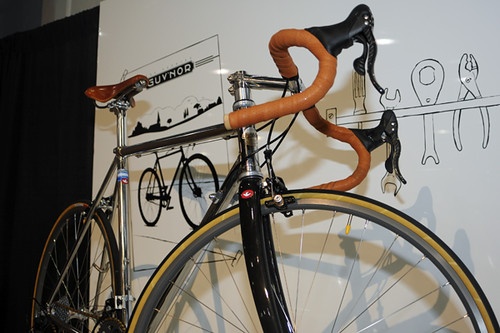 Pashleystunned Interbike visitors by displaying a lightweight Clubman model with a carbon fiber fork and threadless stem. Rivendell caved to its speed-loving customers and introduced the Roadeo earlier this year. Velorbis sent round press releases about its new line of "sport bikes." Velo Orange published a blog post entitled "Why I race and why you should too" (could a cyclocross bike be in the works?). ANT is considering launching a pure road-race model after experimenting with the Fire ANT line.
Pashleystunned Interbike visitors by displaying a lightweight Clubman model with a carbon fiber fork and threadless stem. Rivendell caved to its speed-loving customers and introduced the Roadeo earlier this year. Velorbis sent round press releases about its new line of "sport bikes." Velo Orange published a blog post entitled "Why I race and why you should too" (could a cyclocross bike be in the works?). ANT is considering launching a pure road-race model after experimenting with the Fire ANT line.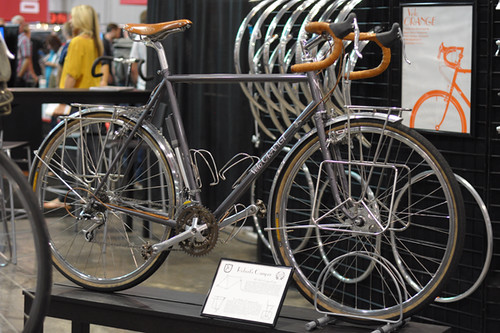 While bicycle commuting is more popular than ever, so are racing, touring, club rides and bicycle camping. And what seems to be happening is that manufacturers are "diversifying" their offerings to cater to the general rise of interest in cycling of all types.
While bicycle commuting is more popular than ever, so are racing, touring, club rides and bicycle camping. And what seems to be happening is that manufacturers are "diversifying" their offerings to cater to the general rise of interest in cycling of all types.  The trend is exciting to observe, but one question often raised is that of whether the other side can ever really "get it." Can a manufacturer specialising in racing bikes make a comfortable and practical transportation bike with a long wheelbase and relaxed geometry? Can a transport bike manufacturer let go of their "weight does not matter" and "fenders are a must" principles and make a competitive performance-oriented machine? Some would say no. But then remember manufacturers such as Raleigh and Gazelle, whose production of iconic road and transport bikes in decades past would suggest otherwise. Ultimately we will have to wait and see. This could get interesting.
The trend is exciting to observe, but one question often raised is that of whether the other side can ever really "get it." Can a manufacturer specialising in racing bikes make a comfortable and practical transportation bike with a long wheelbase and relaxed geometry? Can a transport bike manufacturer let go of their "weight does not matter" and "fenders are a must" principles and make a competitive performance-oriented machine? Some would say no. But then remember manufacturers such as Raleigh and Gazelle, whose production of iconic road and transport bikes in decades past would suggest otherwise. Ultimately we will have to wait and see. This could get interesting.
 Lee took this shot of my dads elk antlers about midnight the night it snowed. The white dots are snowflakes.
Lee took this shot of my dads elk antlers about midnight the night it snowed. The white dots are snowflakes.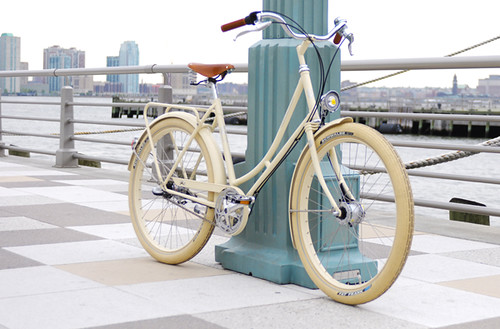
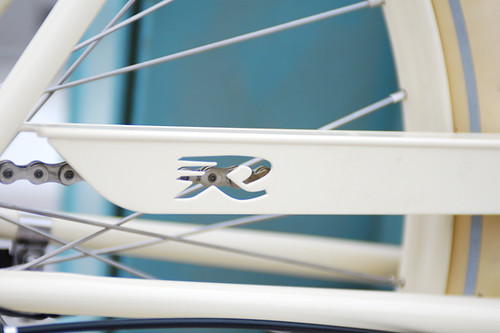

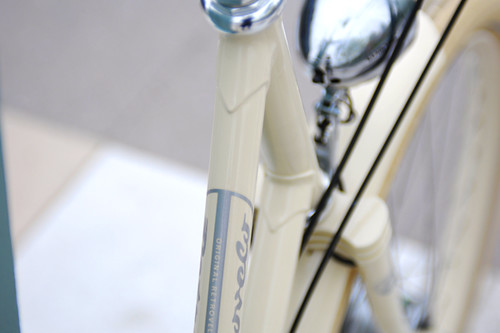
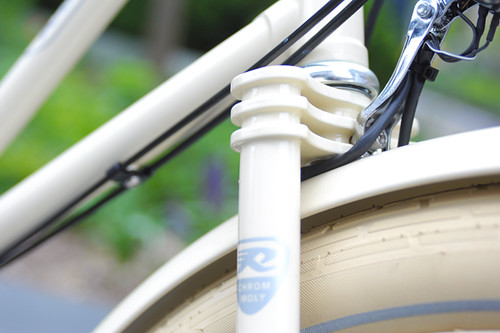
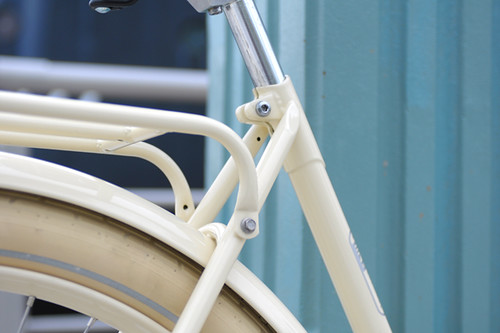
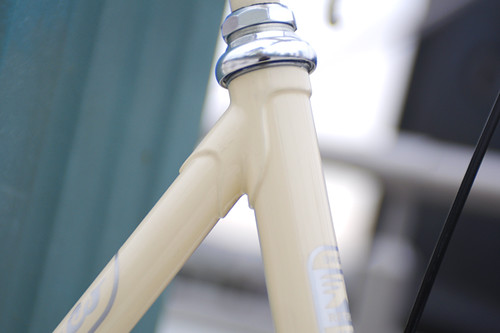
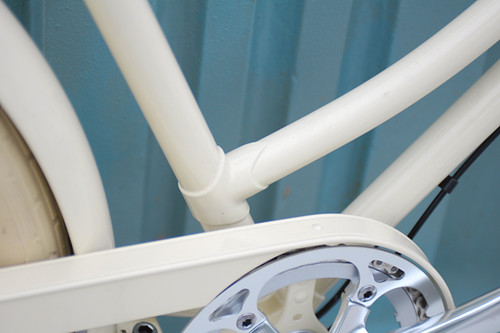
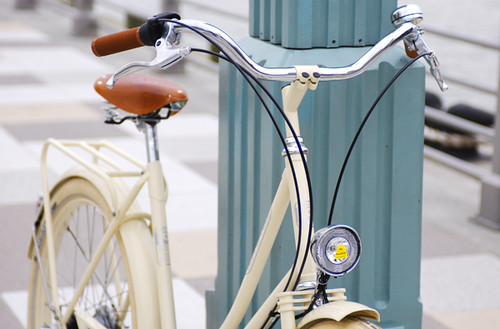


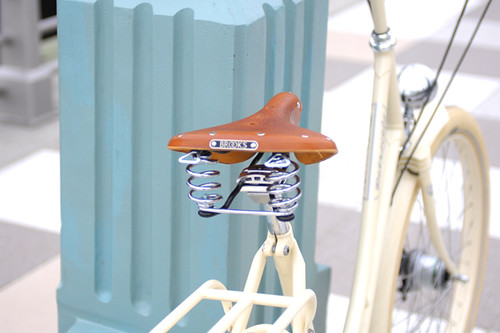
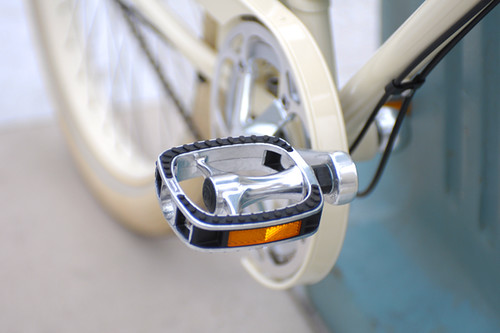

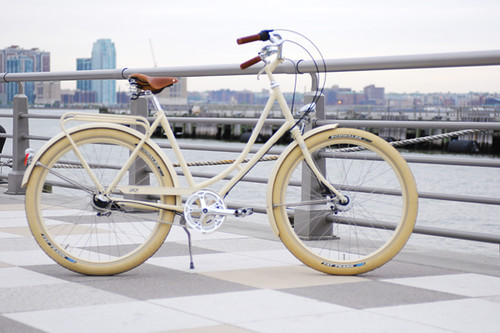
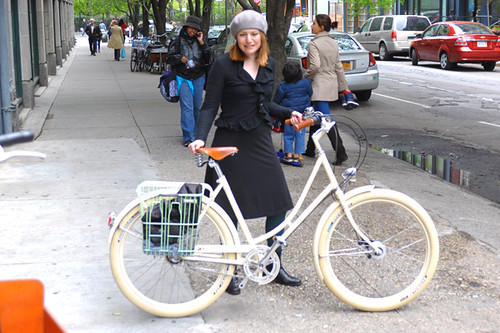



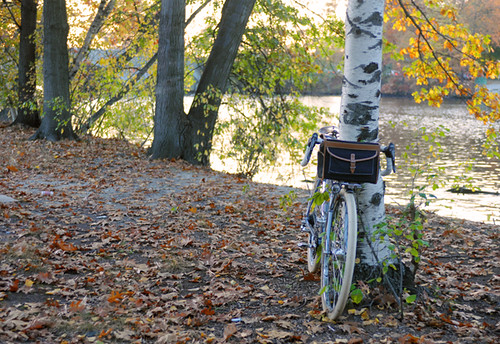











 This was my first time to see something like this so naturally I snapped a foto =).
This was my first time to see something like this so naturally I snapped a foto =). 

 It is usually 4 Swiss cheeses and they are melted. You can eat this (dip) with bread, thin slices of meat and vegetables (potatoes, pickled gherkins and silverskin onions). When eating raclette do not drink water because water can cause the cheese to become thick/solid in your stomach. Drink wine!
It is usually 4 Swiss cheeses and they are melted. You can eat this (dip) with bread, thin slices of meat and vegetables (potatoes, pickled gherkins and silverskin onions). When eating raclette do not drink water because water can cause the cheese to become thick/solid in your stomach. Drink wine! Hopefully these daylight pictures of Jacqueline will do her more justice than the blurry ones from the previous night. These were taken yesterday in my courtyard. I rode her around Vienna all day in a state of disbelief. She rides wonderfully and the folding basket-panniers are amazingly functional. It does not matter what I am wearing, what I am carrying, and where I need to go - this bicycle is ready for anything.
Hopefully these daylight pictures of Jacqueline will do her more justice than the blurry ones from the previous night. These were taken yesterday in my courtyard. I rode her around Vienna all day in a state of disbelief. She rides wonderfully and the folding basket-panniers are amazingly functional. It does not matter what I am wearing, what I am carrying, and where I need to go - this bicycle is ready for anything. As mentioned previously, Jacqueline is a lady's Steyr Waffenrad - which is one of the oldest (if not the oldest?) Austrian bicycle manufacturers. In my previous post someone commented that this is "the Austrian version of a Dutch bike", but while it's true that these are generally referred to as "Hollandrads", I do not think that is really the case. Waffenrad was established in 1895, and was influenced by the British roadster manufacturer BSA rather than by anything from the Netherlands. It later became a generic name used to describe a certain kind of bike, and the most popular manufacturer of these was Steyr. I have been told that at one point Austria had over 180 bicycle manufacturers. Sadly, most are no longer in business.
As mentioned previously, Jacqueline is a lady's Steyr Waffenrad - which is one of the oldest (if not the oldest?) Austrian bicycle manufacturers. In my previous post someone commented that this is "the Austrian version of a Dutch bike", but while it's true that these are generally referred to as "Hollandrads", I do not think that is really the case. Waffenrad was established in 1895, and was influenced by the British roadster manufacturer BSA rather than by anything from the Netherlands. It later became a generic name used to describe a certain kind of bike, and the most popular manufacturer of these was Steyr. I have been told that at one point Austria had over 180 bicycle manufacturers. Sadly, most are no longer in business.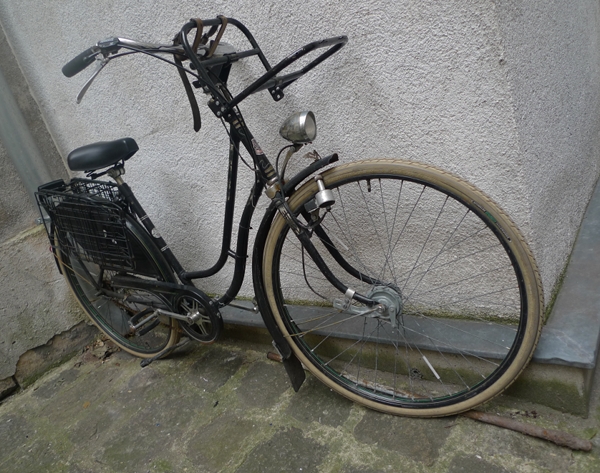 Jacqueline is a 1980s model, though its components are from a variety of time periods. The frame design is a "swan frame": The downtube curves around the front wheel and the top tube forms a complimentary curve. Put together, they form a "swan's neck" shape.
Jacqueline is a 1980s model, though its components are from a variety of time periods. The frame design is a "swan frame": The downtube curves around the front wheel and the top tube forms a complimentary curve. Put together, they form a "swan's neck" shape. To my eye, the lugwork on the headtube resembles swan as well, though I may be imagining things.
To my eye, the lugwork on the headtube resembles swan as well, though I may be imagining things. Lugged connector between the downtube and the toptube.
Lugged connector between the downtube and the toptube.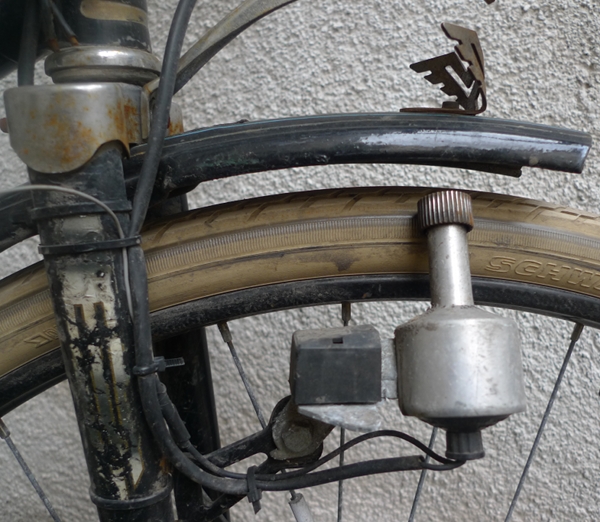 Is the bicycle equivalent of "hood ornament" a "fender ornament"? This bike has one in the shape of a wing-like art deco "W" - appropriated from a German Wanderer bicycle.
Is the bicycle equivalent of "hood ornament" a "fender ornament"? This bike has one in the shape of a wing-like art deco "W" - appropriated from a German Wanderer bicycle. The beautiful tear-drop tail light. I very much want one of these for one of my bikes. You can see the little wire coming out from under the fender and running along the rusty stay, zip tied to it. The winged "W" logo is once again from a Wanderer, though the fender itself is native. Notice the holes that have been drilled into the fender for the original dressguards. You can also see the double kickstand (I prefer this one to the Pletscher) and the rear coaster brake hub. It is not a Sturmey Archer; in fact I saw no markings on it at all.
The beautiful tear-drop tail light. I very much want one of these for one of my bikes. You can see the little wire coming out from under the fender and running along the rusty stay, zip tied to it. The winged "W" logo is once again from a Wanderer, though the fender itself is native. Notice the holes that have been drilled into the fender for the original dressguards. You can also see the double kickstand (I prefer this one to the Pletscher) and the rear coaster brake hub. It is not a Sturmey Archer; in fact I saw no markings on it at all. The coaster brake functions extremely well, but the front (hub) brake is mostly decorative - It works when you're stopped at an intersection and want to prevent the bicycle from rolling forward, but doesn't really make an impact when the bicycle is in motion. The coaster brake is plenty though, and I quickly got into the habit of simply ignoring the front brake lever. The hub gears are operated via the "Torpedo" shifter. The gears are widely spaced, similar to the Sturmey Archer AW hub on my Raleigh. Parts of Vienna are quite hilly and I anticipated using the 1st gear a lot - if not getting off the bike altogether in some areas. But to my surprise, I have mostly been using the 3rd and 2nd gears. I by no means have legs of steel, but old 3-speed hubs seem to be magically versatile.
The coaster brake functions extremely well, but the front (hub) brake is mostly decorative - It works when you're stopped at an intersection and want to prevent the bicycle from rolling forward, but doesn't really make an impact when the bicycle is in motion. The coaster brake is plenty though, and I quickly got into the habit of simply ignoring the front brake lever. The hub gears are operated via the "Torpedo" shifter. The gears are widely spaced, similar to the Sturmey Archer AW hub on my Raleigh. Parts of Vienna are quite hilly and I anticipated using the 1st gear a lot - if not getting off the bike altogether in some areas. But to my surprise, I have mostly been using the 3rd and 2nd gears. I by no means have legs of steel, but old 3-speed hubs seem to be magically versatile.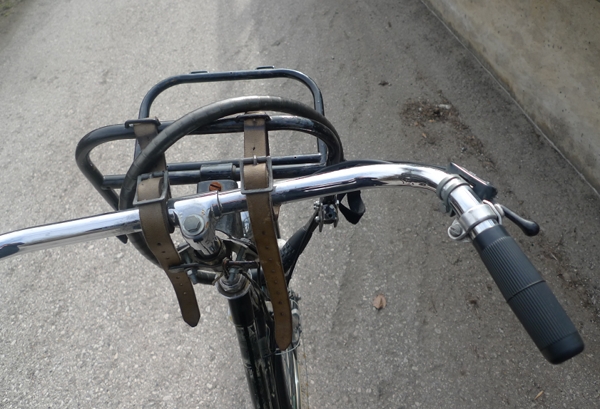 The handlebars are what people today usually refer to as "Porteur" style, but actually they are similar to the version of North Roads that are put on Raleighs with rod brakes. The bar is mostly flat, with the grip areas curving sharpishly upwards and towards the rider. I prefer these to the classic North Road/Albatross bars, which are curvier and more flared to the sides. The plain grips are also surprisingly comfortable. That stuff in front of the handlebars is a folded-up front rack, with a beefy cable lock hanging off it. It all looks like a tangled mess here, but I find it a very comfortable set-up.
The handlebars are what people today usually refer to as "Porteur" style, but actually they are similar to the version of North Roads that are put on Raleighs with rod brakes. The bar is mostly flat, with the grip areas curving sharpishly upwards and towards the rider. I prefer these to the classic North Road/Albatross bars, which are curvier and more flared to the sides. The plain grips are also surprisingly comfortable. That stuff in front of the handlebars is a folded-up front rack, with a beefy cable lock hanging off it. It all looks like a tangled mess here, but I find it a very comfortable set-up.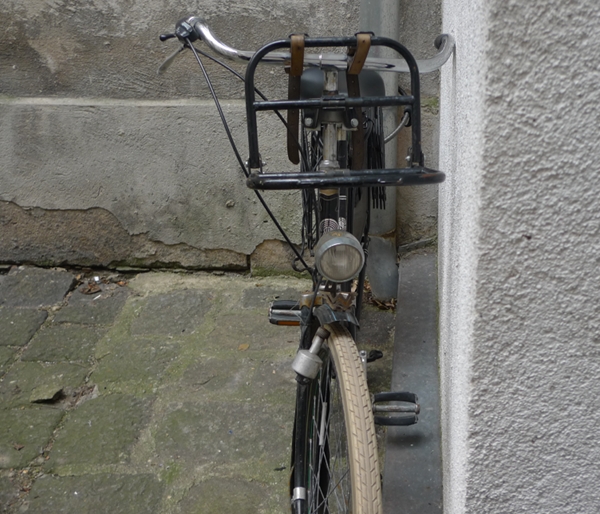 Here is the view from the front, with the rack unfolded. The rack is bolted to the stem and strapped to the handlebars with aged leather belts. It is not supported enough to carry heavy loads, but it is a convenient place for things like extra layers of clothing that might be removed and then put back on during a ride.
Here is the view from the front, with the rack unfolded. The rack is bolted to the stem and strapped to the handlebars with aged leather belts. It is not supported enough to carry heavy loads, but it is a convenient place for things like extra layers of clothing that might be removed and then put back on during a ride. The rear basket panniers, on the other hand, can pretty much take anything you want to put in them. My large work bag fits into these perfectly, as do grocery bags (2 in each). The ride quality is hardly effected when the basket panniers are loaded. I think I need to install these on one of my bikes. The tires are 28" cream Schwalbe Delta Cruisers, just like on my Raleigh at home. They roll fabulously and swallow cobblestones without a peep - wonderful.
The rear basket panniers, on the other hand, can pretty much take anything you want to put in them. My large work bag fits into these perfectly, as do grocery bags (2 in each). The ride quality is hardly effected when the basket panniers are loaded. I think I need to install these on one of my bikes. The tires are 28" cream Schwalbe Delta Cruisers, just like on my Raleigh at home. They roll fabulously and swallow cobblestones without a peep - wonderful.